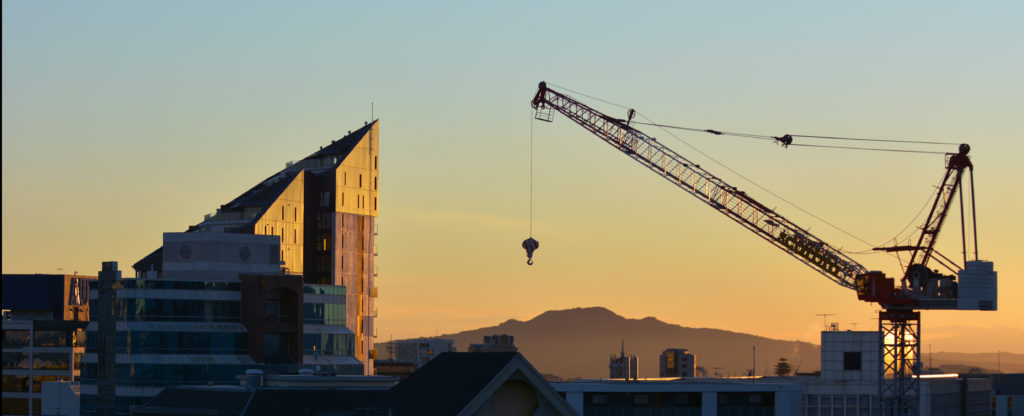Introduction
The biggest topic in the New Zealand construction industry is the continued increase in the cost of construction projects. More specifically, how much of that cost increase is as a direct result of the Covid 19 Pandemic and which project stakeholder is required to take financial accountability for this increase.
"The construction industry was just not prepared...
Overview
Over the last 12 months, the New Zealand construction industry has seen significant cost increases; mostly due to higher labour, material, and operating costs that have not necessarily increased in line with inflation. Notably, petrol prices have increased 32% over the last 12 months, which is the largest annual increase since 1985.
According to Stats NZ, New Zealand’s Consumer Price Index (‘CPI’) jumped 6.9% in the March 2022 quarter, when compared with the same quarter in 2021. This is the single largest movement, since 1990, wherein an annual increase of 7.6%, leading up to the June quarter, was recorded.
The current market volatility and persistent rising costs have led to supply chains trying to limit their exposure, by providing pricing that is only valid for a short term, thus increasing long term financial security.
Accordingly, the construction industry was not prepared to take on the extraordinary, unexpected cost increases recently experienced.
In relation to this, the primary risks for contractors currently are:
- Project costs exceeding tendered allowances and,
- Entering contracts with commercial terms that do not adequately cover escalation for the contract duration.
Labour Costs
The New Zealand border closures limited the availability of in-country skilled labour. Although the borders have now reopened, New Zealand is not yet experiencing an influx of skilled labour. It is unclear why, but some may suggest that the reopening of the Australian borders, along with attractive salaries and a lower cost of living, has contributed to the labour shortages currently being experienced in New Zealand. It has been noted that the net migrant immigration loss experienced in 2021 has put additional pressure on labour resources and is expected to continue for some time.
In 2019, overall aggregated construction costs were expected to increase by 3 to 5% per annum. However, since 2019, the minimum wage in New Zealand has increased by 27%, external labour hire has increased no less than 6% per annum since 2020, and subcontract prices, encompassing both labour and materials, have seen an increase of 20% over the last 24 months.
In addition, it is anticipated that the introduction of a new public holiday and an increase in a sick day provision, from 5 to 10 days per annum, will add pressure to an already strained labour market.

Material Supply Costs
The last 24 months have shown that the supply costs of construction materials are under equal, if not more market pressure, than labour costs.
This is principally due to:
- Loss of production due to Covid 19 Pandemic New Zealand lockdowns;
- Lossed ability to import materials because of the impacts the Covid 19 Pandemic had on key exporting countries, such as China, the United States, Japan, and Germany;
- The high global demand for materials as industries gradually return to normal production levels.
While New Zealand construction costs have been affected by global supply chain issues, other domestic factors may have also contributed to the rising costs of construction:
- There was unprecedented demand for new builds between 2020-2022, whereby New Zealand observed historically high numbers of building consents issued during 2021.
- New Zealand also had one of the longest and most restricted border closures in the world.
- Workforce capacity and capability constraints created an environment whereby construction workers were being poached and offered higher salaries/wages by competing businesses. The implications of this are increased labour cost and delays (and associated costs) for construction projects.
“A combination of strong demand conditions, international supply chain disruption, higher shipping costs, and increased energy prices point towards upside risks to our outlook for concrete prices over the next 18 months.”
- Infometrics
Dealing with Cost Escalation
It is common for stakeholders to enter fixed price contracts. In so doing, most contractors will allow for cost increases as an item in their Risk and Opportunity register. If realised, this risk will reduce the margin on the project.
This risk can be allowed for in the following ways, albeit not exclusively:
- An escalation allowance based on anticipated annual increase in cost for labour and materials; and
- An additional risk contingency based on higher-than-expected annual percentages over and above what was originally envisaged. This approach is used extensively on collaborative type procurement models like ECI’s and Alliance type contracts.
For existing contracts with no escalation clauses, it is proposed to introduce a formula based on indices from Statistics of New Zealand. The standard NZS3910 contract contains a formula for calculating escalation during construction. In Auckland and Wellington, there is a notable delay between costs eventuating and the update of the indices. This, coupled with the shortcoming discussed above, can cause a risk of under recovering actual costs when applying the indices.
Another approach is to have an open book arrangement with the client to demonstrate the actual cost increases on a specific item on a project.
Alternatives to dealing with cost increases can include redesigning or substituting with other materials that are more readily available or have a lower risk of cost increase. High risk items can also be priced as a provisional sum.
Early procurement or forward buying can lock in the prices at current levels. The client may also opt to procure materials directly and utilise their buying power to negotiate further discounts where possible.
Dealing with cost increases, and any inherent risks associated therewith, is incredibly challenging and can lead contractors to overcompensate by inflating their tenders to protect their margin.
Way Forward
In our opinion, the best way to deal with cost increases in a volatile market is a collaborative approach that shares risk between the contractor and the client. This option may be preferable to clients as it contemplates an audit of the reasonable costs put forward for payment against items susceptible to cost increases.
With new tenders, either of the options briefly described above can be followed but should be agreed with the client prior to contract execution.
About the Author
Caspar Coetzee has over 20 years of international work experience in construction cost management, having worked as both consultant and main contactor quantity surveyor. He is a Registered Quantity Surveyor with the New Zealand Institute of Quantity Surveyors.



